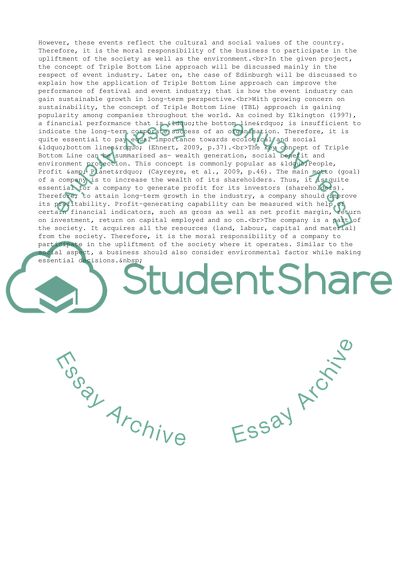Cite this document
(“The Implications of the Use of the Triple Bottom Line Approach Essay - 1”, n.d.)
Retrieved from https://studentshare.org/management/1405790-the-implications-of-the-use-of-the-triple-bottom-line-approach-in-the-events-industry-a-case-study-of-edinburgh-festival
Retrieved from https://studentshare.org/management/1405790-the-implications-of-the-use-of-the-triple-bottom-line-approach-in-the-events-industry-a-case-study-of-edinburgh-festival
(The Implications of the Use of the Triple Bottom Line Approach Essay - 1)
https://studentshare.org/management/1405790-the-implications-of-the-use-of-the-triple-bottom-line-approach-in-the-events-industry-a-case-study-of-edinburgh-festival.
https://studentshare.org/management/1405790-the-implications-of-the-use-of-the-triple-bottom-line-approach-in-the-events-industry-a-case-study-of-edinburgh-festival.
“The Implications of the Use of the Triple Bottom Line Approach Essay - 1”, n.d. https://studentshare.org/management/1405790-the-implications-of-the-use-of-the-triple-bottom-line-approach-in-the-events-industry-a-case-study-of-edinburgh-festival.


